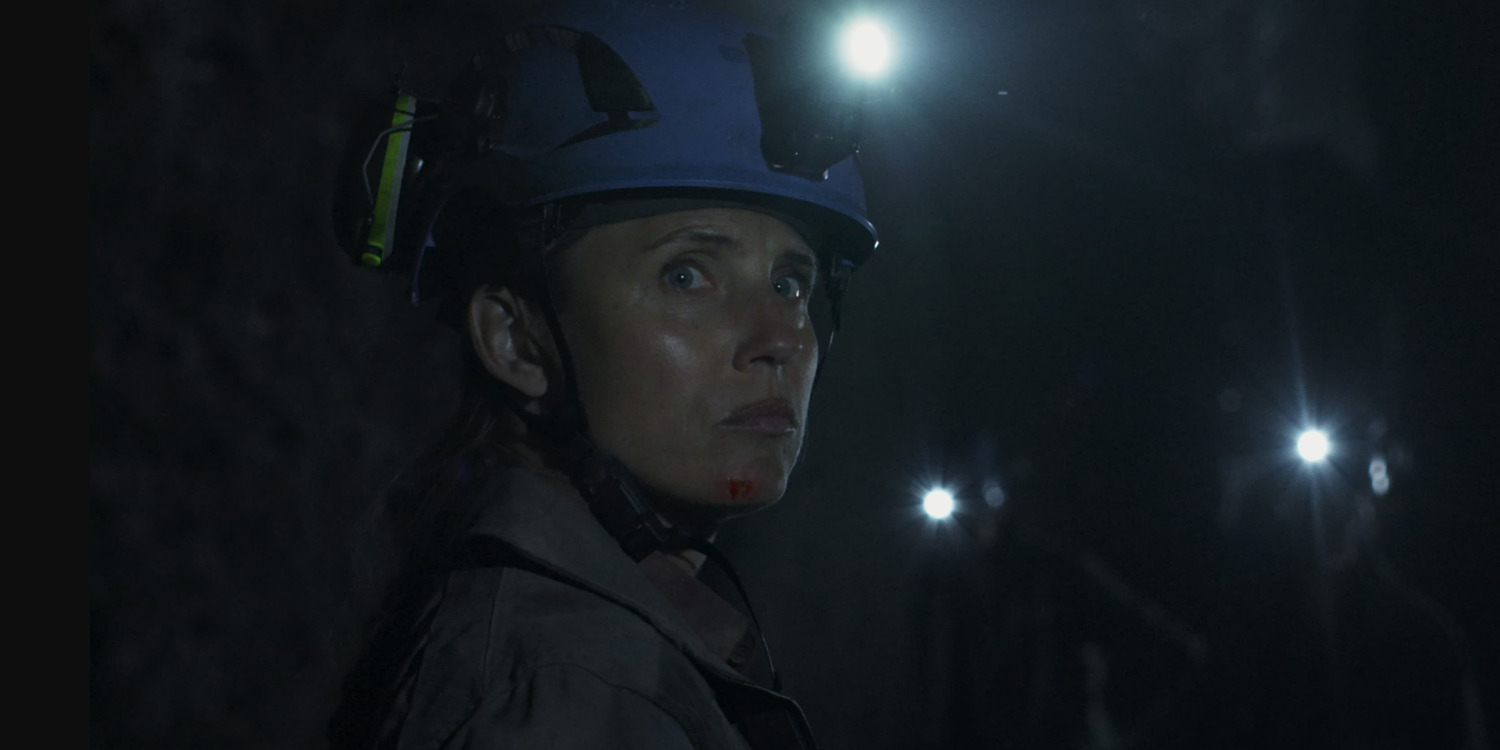Netflix’s Swedish disaster action film, ‘The Abyss’ (Originally titled ‘Avgrunden’), charts the story of a massive seismic activity in a mining town that leads to immense destruction. As the town of Kiruna prepares for its big move to New Kiruna due to its possibly hazardous proximity to the Kiirunavaara mine, a random rock burst shakes up the entire town. Consequently, the mine’s security manager, Frigga, must evaluate the situation and lead the townsfolk through timely evacuation. Nevertheless, the unpredictable disaster causes a rift within Frigga’s personal life when her son, Simon, goes missing.
Thus, with her dysfunctional family mirroring the city’s collapse, Frigga has to find a way to save herself, her town, and her loved ones. Since the rock outburst, which paves the way for Kiruna’s collapse, lends Frigga’s story its crucial backdrop, the disastrous event must have caught the viewers’ attention. As a result, curiosity is bound to rise regarding the event’s basis in reality.
The Abyss Pairs a Real-Life Disaster with a Fictional Narrative
While ‘The Abyss’ isn’t entirely based on a true story, it remains partially inspired by the real-life disaster that struck the Swedish town of Kiruna in May of 2020. Director Richard Holm, who co-wrote the film’s screenplay alongside Robin Sherlock Holm and Nicola Sinclair, wanted to bring an action-packed Swedish disaster film to the screen. As such, the northern Swedish town, Kiruna, undergoing a drastic relocation transformation, lent seamless inspiration to the film.

The Kiruna town was already in the process of relocation when a massive earthquake hit the town on May 18, 2020. According to industry experts, the seismic activity was directly related to the ore extraction activity in the local iron mine, dubbed the “Kiruna Mine.” Different sources cite the earthquake to have hit a 4.1 or a 4.8 on the Richter Scale. Nevertheless, the fact remains that the instance recorded one of the largest seismic activity the country oversaw.
Yet, even before the natural disaster, Kiruna’s close proximity to its infamous mine has been a call for concern for years. In 2004, LKAB, the company in charge of the town’s mining activity, broke the news to the citizens that the mine’s expansion would lead to widespread cracking and collapse within the city. As a result, a decision was made to move the town three kilometers to the East— a process that would take years but ultimately ensure some safety.
Thus, the idea of a town experiencing a massive disaster in the middle of a years-long move brought on by the same problem captured filmmaker Holm’s attention. Nonetheless, in order to add some thrill to the idea, Holm had to fabricate and modify much of the reality that unfolded within the town at the time of the disaster. In fact, Joel Kangas, the real-life mining manager of LKAB, clarified that the film departs from the mine’s reality in significant ways.
Furthermore, according to SVT Nyheter, Kangas asserted that citizens don’t have to worry about crashing into the mine, as the film’s characters do. Similarly, Anders Lindberg, the company’s press manager, declared that no disastrous cavity, as the one depicted in the film, exists under Kiruna in real life. Thus, we can conclude that despite harvesting inspiration from a real-life event, the film largely exaggerates and dramatizes its impact within its story.
Moreover, the filmmaker was also aware of the difficulties presented by the disaster genre, realizing that an engaging plot needed relatable characters at its center for the audience to relate with. For the same reason, Holm fabricated the characters portrayed within the film, adding a dysfunctional family at the narrative’s center to parallel the cracks gradually developing within the town due to the upcoming disaster.
As a result, while the film includes several realistic elements with a basis in reality, the final product ends up suspended within fact and fiction. Ultimately, ‘The Abyss’ presents a compelling disaster film with the narrative center’s dramatic storyline remaining entirely fictitious. Therefore, the film fictionalizes much of the details in interpreting a real-life event.
Read More: The Abyss: Where Was the Netflix Movie Shot?


You must be logged in to post a comment.